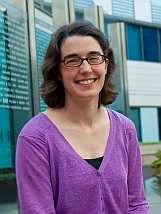
Associate Policy Researcher, RAND Corporation
Cubberley Conference Room 114
To test whether low-poverty schools and neighborhoods improve low-income students’ achievement, this study followed 850 children whose families were randomly assigned to public housing apartments dispersed throughout hundreds of neighborhoods in Montgomery County, Maryland. The neighborhoods are, in turn, zoned into 114 of the district’s 131 residentially-assigned elementary schools. During the period of this study (2001-2007), half of the public housing children attended schools where less than 20 percent of students qualified for a subsidized meal; the balance attended schools of moderate poverty where 20-85 percent of students qualified for a free and reduced-price meal. By the end of elementary school, public housing students in the lowest poverty schools substantially outperformed (0.4 and 0.2 s.d. math & reading) their public housing peers in the district’s less advantaged schools. Moreover, they had substantially caught up to their non-poor districtmates, cutting their initial achievement gap in half. Further, the benefits to public housing children’s math and reading achievement from attending a low-poverty elementary school exceeded the benefits of attending higher spending moderate-poverty schools where the district implemented a series of policies such as full-day kindergarten, reduced class sizes in grades K-2, and extended class time, and additional professional development for teachers aimed at reducing achievement gaps. The limited variation among neighborhood poverty rates only allowed for a narrower test of neighborhood effects. Over and above school poverty rates, living in neighborhoods where less than 5 percent of the population was in poverty yielded no statistically significant differences in public housing children’s math or reading achievement relative to their public housing peers living in neighborhoods where 5-10 percent of the population lived in poverty.
Taryn Garvin
tgarvin@stanford.edu